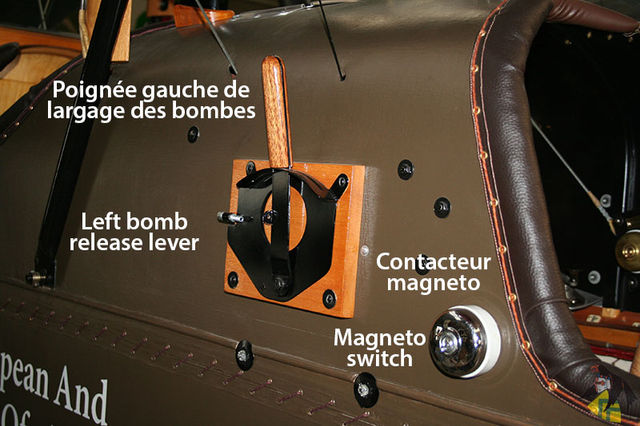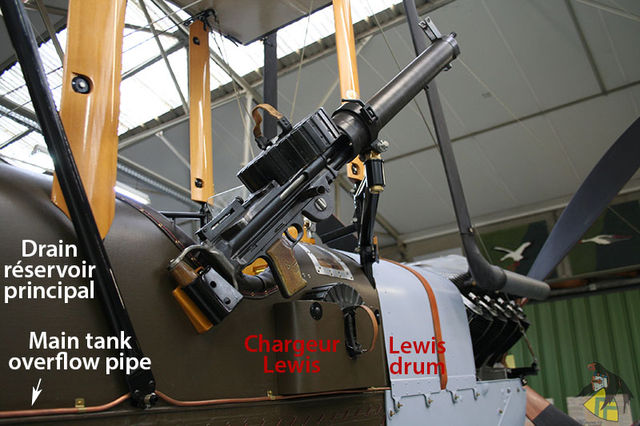

Conçu par la Royal Aircraft Factory (R.A.F.), le Be2 est l’évolution d’un appareil construit par Geoffrey de Havilland et F.M. Green sur la base d’avions Blériot et Voisins endommagés. Cet appareil précurseur, désigné Be1 pour « Blériot Experimental », fut le premier avion spécifiquement conçut pour une utilisation militaire.
Début 1912, le prototype du Be2, équipé d’un moteur Renault de 70 hp, effectua son premier vol. Il fit rapidement la preuve de ses qualités de stabilité, principale caractéristique recherchée alors pour les avions d’observation.
Bien qu’étant un atout pour les missions d’observation et de reconnaissance photographique, la stabilité du Be2 devint rapidement un lourd handicap avec l’arrivé des premiers chasseurs allemands comme le Fokker E.III… Devenant des cibles privilégiées, subissant de lourdes pertes, les Be2 se virent affublé de surnoms tels que : « Stability Jane », « the Quirk » (La Blague) ou « Bits of everything » (fait de bric et de broc).
Plusieurs variantes furent successivement mises au point, du Be2a au Be2g, chacune apportant une série d’améliorations sans pour autant parvenir à faire évoluer les performances de cet appareil conçu avant la guerre…
Affecté aux missions de reconnaissance et de bombardement, les Be2 se virent bientôt cantonnés aux vols de nuit en tant que bombardier ou chasseur de Zeppelin.
La désignation Be2f apparut en octobre 1916, afin de donner une dénomination officielle à d’anciens Be2c (biplace d’observation mono-commande) dont les ailes et les empennages furent remplacés par des éléments de Be2e, améliorant quelque peu les caractéristiques.
Reproduction de Be2f

Reproduction construite d’après des plans d’époque, l’appareil est équipé d’un moteur R.A.F. 1a de 90 hp conforme à l’origine.
L’avion porte les couleurs du Be2f n°2560 appartenant au 52 Squadron britannique, appareil transformé en bombardier de nuit. Il est terminé avec la totalité de ses équipements de nuit (éclairage électrique, pyrotechnique, etc...), tous fonctionnels.

Be2f du 52 Squadron
La construction
Photoscopes
Photoscope
Le Be2f de Memorial Flight est configuré en bombardier de nuit. Equipé d'un éclairage intérieur et extérieur, ainsi que de pots éclairants Holts en bout d'ailes pour l'atterrissage, son cockpit est donc spécialement configuré, tel qu'il aurait pu l'être à l'origine.
Ce photoscope montre le cockpit du Be2f (à l'arrière) ainsi que le poste observateur (à l'avant) avec leur éclairage fonctionnel.
Photoscope
Le cockpit (place arrière) en détail.
Photoscope
Le poste observateur (place avant) en détail.
Photoscope
Le fuselage avant entoilage.
Photoscope
La cabane avant entoilage.
Photoscope
Le plan fixe et la gouverne de profondeur avant entoilage (côté droit).
Photoscope
L'aile supérieure gauche avant entoilage.
Equipements lumineux
L'avion étant configuré en bombardier de nuit, un équipement électrique fonctionnel et identique à l'original est installé. Ainsi le cockpit est entièrement éclairé, et l'appareil est équipé de feux de navigation. Une lampe de morse se trouve sous le fuselage, actionnée par un interrupteur morse situé dans le poste du pilote.
Cette vidéo vous montre le fonctionnement des équipements lumineux du fuselage (lumières de cockpit, feu de navigation arrière, lumière de morse).
Sous les ailes des feux incandescents Holt seront installés. Ils brûlaient pendant 1 minute et servaient à éclairer la piste et permettre au pilote d'estimer la hauteur par rapport de sol au moment de l'atterrissage.
Album Photos
Vidéos
V8 Forever - Spad XIII & Be2f, Juin 2022 : Vol au crépuscule (8min41s)
R.A.F. Be2f, Mai 2022 : Premier vol du Be2f (4min16s)
R.A.F. Be2f, Mars 2018 : Démarrage du moteur
R.A.F. 1a à La Ferté-Alais (2min54s)
R.A.F. Be2f, Novembre 2012 : Premier démarrage du moteur
R.A.F. 1a (2min49s)
Spécifications
Longueur : 8.30 m
Envergure : 12.42 m
Masse : 649 kg
Moteur : 1 R.A.F. 1a de 90 hp
Vitesse : 145 km/h
Autonomie : 4h
Equipage : 2
Armement : Différentes bombes + 1 ou 2 mitrailleuses Lewis, calibre 303 (7.65mm)
















































































































